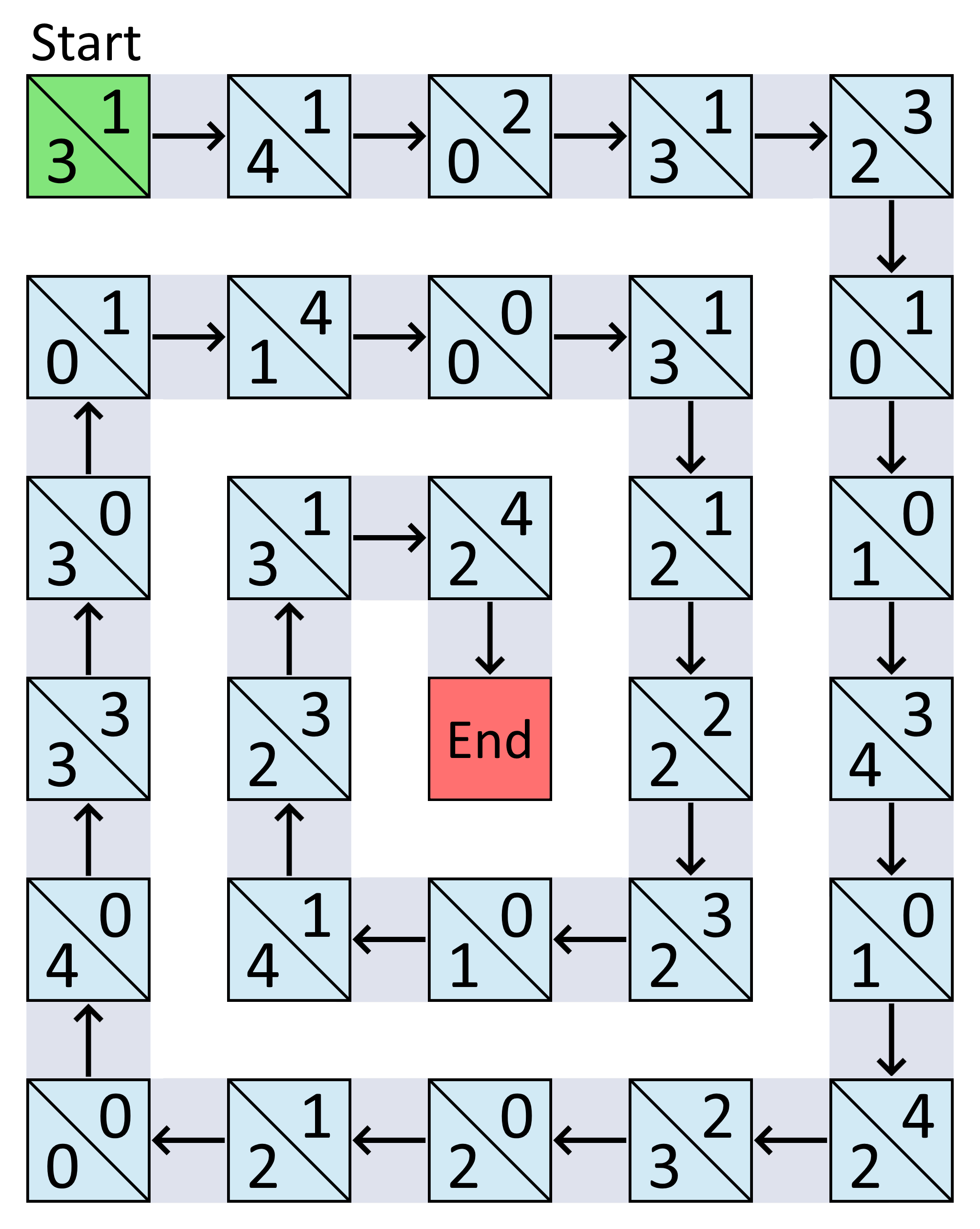Copyright © University of Cambridge. All rights reserved.
Jumping Squares
Jumping Squares printable sheet
This activity can be done alone or with a friend. The aim is to get to the end of the track in as few jumps as possible.
Here is the track of squares that you will be jumping on:
The numbers on each square are the numbers of squares that you can jump forwards or backwards when you are on that square. On the 'Start' square, you can jump forwards 1 or 3 squares for your first jump. If you land on a square with 1 and 4 on it, you can jump forwards or backwards either 1 or 4 squares.
If the square has 0 and 0 on it, you can't jump at all. You have to go right back to the beginning and start again!
Have a few tries at getting from the 'Start' square to the 'End' square by making these jumps. How could you count the number of jumps you are making?
What is the least number of jumps you can make to get round the whole track? Which squares do you need to land on?
Why do this problem?
This problem will encourage children to work systematically, and think and plan ahead. The activity can be done by one child working alone, but might be better if two work together.
Possible approach
You could start by looking at the first line of the track with the whole group. Explain the rules of the challenge and invite children to talk to a partner about what their first move might be. Ask for some suggestions and encourage good explanations of their choices. This initial discussion will allow you to reinforce the rules and make sure that learners do not count the square
they are on when jumping forward (or back).
Ask the group for suggestions as to how they will keep track of the number of moves they've made. Allow them to choose a way that suits them and have available all sorts of equipment that might help, for example whiteboards, paper, counters, number lines, number squares, digit cards ...
Once learners have got the idea of the task, suggest that they work either on their own or in pairs to try and find the smallest number of jumps that are needed to get to the centre.
A black and white version of the track can be printed and copied for children to
use.
After some time, you may wish to draw the group together for a brief discussion about progress so far. It might be helpful to ask some pairs to share what they've done, for example you may notice that they have recorded which squares they have jumped on in a good way. Keeping a record not just of the number of jumps but where the jumps are to and from might help children tweak and
improve their total number of jumps.
At the end of the lesson bring the group together again. What is the least number of jumps that were made to get round the whole track? Is that the very best way to jump round or does the group think that there might be a better way still to find?
Key questions
Where could you land next?
Which move might be better? Why?
Have you thought of jumping backwards?
How are you keeping count of your moves?
What is the least number of jumps that you made to get round the whole track?
Do you think that is the very best way to jump round? How do you know?
Possible extension
Learners could make their own 'jumping squares' track for others to try or perhaps they could introduce a different rule using the same track.
Possible support
It might be that an adult could keep count of the number of moves made so this takes out one level of detail for the children to attend to.
